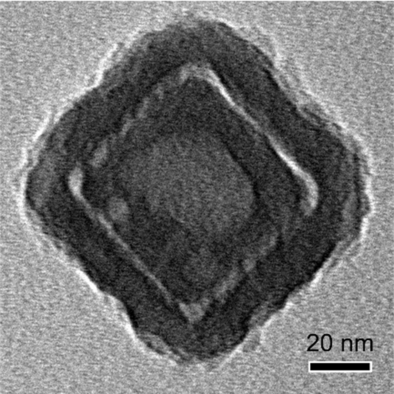Direct Visualization and Semi-Quantitative Analysis of Payload Loading in the Case of Gold Nanocages
Graphical Abstract
Abstract
Upon incubation with Au nanocages, pyrrole (Py) molecules can enter the cavities by diffusing through the porous walls and then be polymerized to generate a polypyrrole (PPy) coating on the inner surface. The thicknesses of the PPy coating can serve as a direct indicator for the amount of Py molecules that diffuse into the cavity. Py molecules are able to diffuse into the cavities throughout the polymerization process, while a prolonged incubation time increases the amount of Py accumulated on both inner and outer surfaces of the nanocages. Furthermore, it is demonstrated that the dimensions of the cavity and the size of the pores in the wall are not critical parameters in determining the loading efficiency, as they do not affect the thickness of the PPy coating on the inner surface. These findings offer direct evidence to support the applications of Au nanocages as carriers for drug delivery and controlled release.





